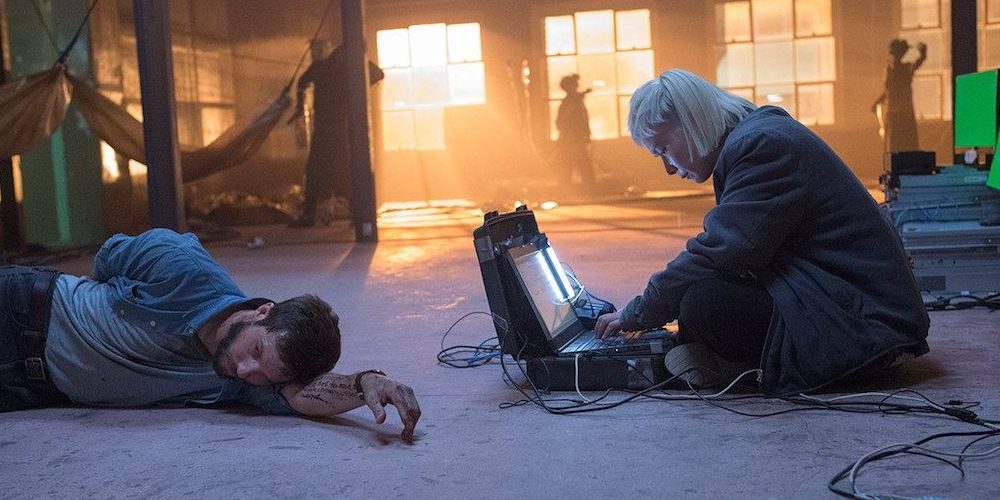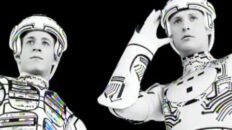“I think computer viruses should count as life … I think it says something about human nature that the only form of life we have created so far is purely destructive. We’ve created life in our own image.” ― Stephen Hawking
Upgrade director, the Australian born Leigh Whannell, is best known for writing horror films. He scripted the first three Saw films, the Insidious series, and Dead Silence. This is his second outing as director after Insidious: Chapter 3. And while there are elements of horror in the film, Upgrade has a lot more on its mind than scares.
If you mixed the premises of The Six Million Dollar Man television show with Death Wish, ran the plot through William Gibson’s Johnny Mnemonic, and gave a nod to Terry Gilliam’s Brazil, you might get a little sense of the film’s DNA. It gets a lot of mileage out of blending genre influences, managing to be familiar while at the same time subverting expectations just when you think you know where its heading. An upgrade, indeed.
Logan Marshall-Green provides an impressive turn in the starring role as Grey Trace, a freelance car mechanic (he upgrades cars, get it?) whose principal client is tech guru Eron Keen (Harrison Gilbertson). Keen here is something of a cross between the reclusive, socially awkward Mark Zuckerberg and technically savvy, visionary Elon Musk. When we first meet him, he is playing with his cloud. It’s a literal cloud. Grey brings his wife (Melanie Vallejo) along to meet Keen. She works for one of his competitors, Cobolt, who develops human-machine augmentation technology. She acknowledges they’re not as big of a player as Keen, but they’re getting there. “No, you’re not,” deadpans Keen, who then introduces the pair to his latest invention, an AI chip he calls STEM. STEM can be implanted in a human to enhance their cognitive abilities.
On their way home, a malfunction with their self-driving car leaves Grey and his wife helpless at the hands of a group of mercenaries, who we later discover are enhanced in various ways by technology implants. They murder Grey’s wife and leave him paralyzed from the neck down. After suffering through initial period of convalescence and making a suicide attempt over grief and helplessness, Grey is visited by Keen who offers him a deal: sign a confidentiality agreement and receive the STEM implant which will give him back motor control of his limbs. Grey finally agrees to the offer and makes a stunning recovery.
But STEM winds up being more than just a means to regain physical motor functions and cognitive improvements. It turns out STEM has a voice and maybe mind of its own. Speaking to Grey through his mind, STEM helps identify clues to Grey’s wife’s assailants that no non-augmented human could have discovered on their own. But because Grey has signed the confidentiality agreement with Keen, he cannot let anyone know he is not still paralyzed, let alone disclose this new information to the police, and decides to take matters into his own hands–or are they STEM’s hands now?
What follows is an enjoyable series of plot progressions as Grey begins to hunt down his wife’s killers and gets to know STEM and the AI’s capabilities. “I am state of the art, but I am not a ninja,” STEM quips at one point after Grey boasts of his abilities to a physical opponent. The back-and-forth between Grey and STEM is reminiscent of Tony Stark’s banter with J.A.R.V.I.S. and later F.R.I.D.A.Y. in the Iron Man and Avengers films, or maybe K.I.T.T. from Knight Rider. But despite STEM’s insistence that it can only act when Grey gives it permission to do so, a few actions it takes appear to contradict that assurance. Grey chooses to ignore those red flags because he is set to avenge his wife.
Questions of free will and intentionality underlie the action, humor, and occasional horror here. Not just a screed against the dangers of technology, the film asks us to consider if the choices we make in any given moment lead to circumstances where we then become unable or incapable of making different ones. Do the tools we use and the technology we develop inform the ways we train ourselves to approach solving problems? Or in other words, do we limit our imaginations by taking certain paths? And maybe my favorite question: can an artificial intelligence created by a flawed humanity transcend the inevitable flaws–technical, moral, ethical–we create it with?
But this is all subtext in a film that is a lot of fun. The action scenes are creative, blunt but innovative due to camera work which moves machine-like through STEM and Grey’s deconstruction of their opponents. And the cast, full of up-and-comers, balances the mix of serious drama with fantasy tropes and the occasional dash of humor.









